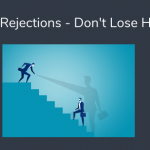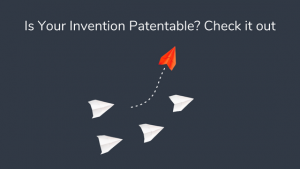
Mr A: Core innovation happens when we stop believing in the societal norms of accepting ‘that’s how it works’.
Sam Zellner: “The corollary to this is believing long-held assumptions can’t change. For example, Ken Olsen, CEO of Digital Equipment Corporation (DEC), said in 1977, ‘there is no reason anyone would want a computer in their home.’ The challenge for all of us is realizing when a basic assumption is no longer true. The funny thing is it’s always obvious later on!”
Who is Sam Zellner?
Samuel N Zellner is a prolific American inventor with over 200 issued and pending patents worldwide. He has held many prestigious positions in innovation and intellectual property domains. At AT&T, Sam created state-of-the-art platforms utilizing Artificial Intelligence (AI). He also developed new approaches in advanced big data concepts to develop high-value patent portfolios and monetize these Intellectual Property (IP) assets.
Sam currently leads a not-for-profit open-source initiative to create a library of advanced AI-powered tools called PQAI to accelerate innovation and improve patent quality. PQAI stands for Patent Quality through Artificial Intelligence. Sam Zellner is also the founder and CEO of InspireIP, an invention disclosure system that makes invention management easy for organizations to help them reach their true innovation potential.
Sam is a board member on a number of the state IP Alliances as well as the newly formed US Intellectual Property Alliance. He received recognition as Iam 300 Top Strategist 2019. He is experienced in planning and strategizing in high-tech. Sam was also on the Licensing Executive Society (LES) board of directors, Atlanta chapter, from January 2018 to December 2019.
Exclusive Interview With Sam Zellner
We asked some questions from Sam Zellner, and through his experience, he has provided some brilliant insights for inventors and patent portfolio managers.
#1. What challenges do you face in your daily life as an inventor?
My big joke is that the inventors are some of the loneliest people as they cannot find support for their ideas. As an inventor, you come up with an idea, and if you present your idea to someone, they tend to discount it as being bizarre or incorrect.
For example, long ago, when inventors were thinking about putting cameras on cell phones, everybody was like, why would we put cameras on cell phones? Data transmission was expensive, cell phones could not hold much data, and it seemed like a crazy idea at the time. It is hard for an inventor to share ideas with others, as inventors typically base their inventions on the assumption sets different from the accepted norms. Battery technology will improve (think electric cars), people will change their behavior (think buying online), and laws will change (think Uber and taxi licenses). The unimaginable is why most people can’t see or accept inventors’ visions. Later on, when hopefully the idea is adopted, everyone’s lenses look at the concept with the new assumption set will say that either ‘I was also thinking of this idea back then’ or that ‘it was obvious’. It is hard as an inventor to get credit. With the patent system, the inventor gets some credit as they are recognized with the patent.
Generally, it’s a lonely life as an inventor, a tough life because people rarely acknowledge that you have a good idea. Rarely do you get recognized as doing something novel; rather, you are recognized as crazy, which is the typical thought process.
#2. Are you part of any inventor groups or communities?
I am not aware of a lot of communities. Maybe, the individual inventors are a part of some communities. My experience with corporate inventors is that they tend to talk to their associates, but I am unfamiliar with the corporate inventors being part of a specific group. You might check with the inventors’ association to see if there are any particular groups they are pushing towards. I think in Atlanta, some incubators have fairly popular events. Tech Village in Atlanta is one.
#3. What motivates you to invent?
As many say, engineers like solving problems; I think it’s a mixture of curiosity and wanting to solve problems. Patents are about solving problems, so it comes naturally that way. I look at problems and try to think of how to solve them.
#4. When do the best ideas occur to you?
I think most people say that when you are in the shower. On the contrary, I think typically, as I said, it’s about solving problems, so the best ideas come a few hours after you see a problem or run into a problem. As they say, your mind is thinking about a problem; to solve it, sometimes all you need to do is let the subconscious help you. Because unfortunately, the assumptions that most of us go around with are so strong that it’s hard to see past those assumptions. Particularly what are called the ‘old assumptions’ – assumptions that might have been good a year ago but now because of new technologies, change in economic factors or regulatory landscape, or something in the environment. Now the old assumption that – ‘we can’t do this,’ is probably no longer valid. So when you think of assumptions as walls, just moving those walls away opens up a whole gamut of opportunities.
It reminds me of location services; I did a lot of patents around location services.
Earlier, we had no real in-location services capability, and then GPS came. GPS led to the enhancements with cellular, allowing us to do location for 911. The general thinking of the people was that ‘I don’t know where somebody is when they call when they are using a phone,’ and then suddenly, anybody could find out where exactly the caller is.
So as an inventor, you feel intrigued to brainstorm what else can such a service be useful for.
What came to my mind at that time was that the cellular network moves with me. It knows when I leave the house, it can see me driving my car and track my location in real-time. Now, if there was a way to change the thermostat in my house while I am fifteen minutes away from home, I could save so much energy. Since it’s sweltering in Atlanta, whenever I used to leave the house, I always left the air conditioning on to keep the house cool. It always bothered me as it was a considerable waste of power. So this was a simple example; once we realize that we can use location to control things, it opens up all kinds of opportunities.
Another thought was now that the cellular network could see me arriving in a city, if there’s a hotel in that city, it can automatically register me for the hotel because it can see that I am coming for my hotel room. So it’s fantastic; once I start realizing and accepting that I can know where people are, I can now make some assumptions about what should be done based on where I am. So that’s what I mean about the whole idea of changing assumptions and opening up more opportunities.
#5. Is there a systematic approach to coming up with innovations?
There are a lot of techniques out there; it depends on the person’s choice of what approach works well. There are two parts to this; one is getting the seed idea, and the other is extending it. So the hard part is getting the seed idea and finding a significant problem that hasn’t been solved well. I usually go through the assumptions I make about the problem and test each to see if it’s true.
The other piece I see many people do is that they tend to get fixated on one solution to a problem. They don’t generalize it because, again, think about it, the patent is looking into the future. As an inventor, you are trying to throw a solution into the future, and it’s tough to know how the world will change. So you would want to expand your idea. Moreover, you don’t know what other people have done.
That’s one of the reasons why PQAI is so helpful. When you run your idea through PQAI search engine, you can see where the thinking is and how you can modify your idea based on that. As an inventor, you might find out that people have already thought about your idea, so you might want to think about the next generation of the idea. Maybe there are some aspects of using location to control something, what would come next, and where else you might apply this knowledge of the live location. What about using location to provide package delivery notifications?
When you get a seed idea for an invention, try to generalize it. I think of generalizing it to the point that it’s no longer novel. It gets so broad that you’ll run into the wall that says, it sounds familiar, or that’s already been done. In any case, it helps you, particularly in the patent, because, as you know, with a patent, you have your initial claim, and then you have your dependent claims. Thus, generalization expands your idea. Like again in the example of location services and controlling the thermostat, you might generalize it from controlling a thermostat to controlling a device. You might also define control as turning on and off instead of adjusting. You might also think of using the control for multiple devices. So generalization helps to broaden your idea in case some prior art is already there; you can find your segment while running your ideas through prior art search tools like PQAI.
#6. What was your first invention, and when did you come up with it?
Aah! the first invention, well, I didn’t go anywhere with that, but I tried. I had two ideas; I came up with the first one in 1983. I wanted to create a phone ringer that would play tunes for landline phones. My interest was particularly in the fight songs in colleges as tunes. For example, I attended school at Northwestern University. Like most universities, they have a big marching band and their own fight song. And I thought that, wow, all the alums would love to have their phones ring their school’s fight song. At the time, there were no cell phones, and landline phones did not have any tunes playing; they were just standard ringers. So I was trying to put together the electronics around it, but unfortunately, I could not quite get it together.
The other idea, which sounded crazy back then, was putting TVs in an elevator. I used to work in a high-rise building back then. I just noticed how much time people spend in the elevator and how uncomfortable people are in the elevator. So then, I thought, wow, if you could put a TV in there and show some news or something, that would be welcome since people are looking around uncomfortably in the elevator. I actually talked to the city of Chicago elevator commission about putting TVs in the elevators, and they thought I was crazy. Now the ironic thing is, I haven’t seen that many, but there are a few TVs in the elevators, but you see TVs in public places. It is one of the examples where I should have been thinking broadly because now you see TVs at the airport, gas stations, pumps, and in many different places. It goes back to thinking broadly because sometimes your initial use case is not the most important use case.
#7. What shall be your advice for budding inventors?
Run your idea through PQAI to learn how other inventors have tried to solve the problem. Keep an open mind. Avoid getting stuck on your one use case. Share your idea with people and get feedback, obviously in a way that it is protected but maybe after your provisional application. You can also discuss the idea with your close friends to get a sense of how people are reacting to your idea. It will often give clues as to where you are a little off in your idea. In my experience, I have rarely seen people hit it right with their initial idea. People are in the right area and have the right basic building blocks, but it needs to be adjusted somehow. My advice is to be open and listen carefully to people’s reactions, as it might give clues about where you should be going.
The other thing is that inventing is very hard. So don’t be discouraged if your first idea might not be novel. It is very challenging; you are competing against all the inventors in the world. That’s very tough, so don’t get discouraged.
#8. How was your experience as an inventor at AT&T?
My experience at AT&T was excellent. AT&T has a very energetic, creative environment and brilliant people. We could talk about new ideas, and people were very open to them. In addition, we were working with many cutting-edge technologies at AT&T, so I found it very easy to develop new ideas in that environment.
#9. What tips would you like to give a patent portfolio manager?
Again, one needs to be broad to have an effective patent. So I would want to encourage the patent portfolio managers to ensure the patent is broad enough so that the patent is still relevant as the future unfolds. I think doing some prior art searching helps to broaden your patent. Prior art searching gives you a sense of how other people think about the idea. Then you can see how your idea relates to those thoughts, which usually generates more use cases and thoughts about how to broaden the patent and where novelty exists.
I would encourage the patent portfolio managers to do some prior art searching, and that’s where PQAI provides a great opportunity, as prior art search takes a lot of time. With PQAI, you can do it very quickly. So it is a golden opportunity for patent portfolio managers to leverage it and ensure that either the ideas/inventions are new disclosures or continuations or their very best.
Sam Zellner | Patent Portfolio
The statistics and charts hereunder provide an insight into Sam’s patent portfolio, which has more than 200 issued and pending patents worldwide.
Note – Patent families represent the count of total unique patent families. Patents represent the total number of records, i.e., considering all the family members of an INPADOC (International Patent Documentation) family. The following four statistics are based on unique families count.
- Technology Area And Patent Families Count –
Sam’s patent portfolio has 292 patents globally, which belong to 91 unique patent families. He has worked in many tech industry areas, but most of his inventions are related to electronic communication techniques and instruments. The count of inventions in this and related domains is 86.
The chart below details the areas of technology in which his patents have been filed:
- Technology Through The Years –
This statistic is based on Sam Zellner’s patent filings periodically, indicating how many patents are filed year by year and in which area of technology:
- Inventions –
Sam Zellner has patents in 91 different patent families within his patent portfolio. He is an individual inventor of 17 and a co-inventor of the rest of the 74 core patents:
- Patent Assignment
Sam Zellner is affiliated with AT&T Inc, putting AT&T on the top of the list of patent assignments by Sam for his inventions. However, there are names of a few other assignees in the list, in the cases where Sam’s inventions have been re-assigned by AT&T. All these patents were filed by AT&T. All the subdivisions of AT&T as AT&T Inc have been considered.
The term “Patent Counts” represents the counts of individual patents filed in various countries, irrespective of the patent family. The following statistic is based on the total number of patents in the portfolio:
- Patent Filing Worldwide
The following graph shows Sam Zellner’s patent filing for inventions worldwide. The majority of the patents have been filed in the United States of America. Also, there are ten patents in which the applications were filed before the World Intellectual Property Organization (WIPO) & the European Patent Office (EPO).
A Quick Wrap Up
Sam Zellner has decades of experience as an inventor and a patent portfolio manager.
Sam’s advice to the inventors is to think broadly and expand the idea far beyond their first use case. In addition, Sam recommends that inventors keep an open mind and observe how people react to the idea when shared with them in a protected way. Finally, Sam also motivates inventors to avoid getting discouraged if their idea is not novel.
Sam encourages the patent portfolio managers and the inventors to do some prior art searching to find out how other inventors are approaching the same problem. Prior art search gives ideas to broaden the patent claims and file effective patents.






No comment yet, add your voice below!